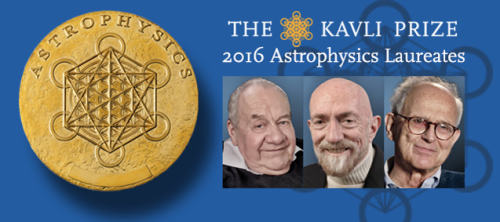
Gravitational-wave pioneers: (l to r) Ronald Drever, Kip Thorne and Rainer Weiss.
By Michael Banks
It’s been a great month for the people behind the Advanced Laser Interferometer Gravitational-wave Observatory (aLIGO), which recently discovered gravitational waves.
In early May, Ron Drever, Kip Thorne and Rainer Weiss – who co-founded LIGO – together bagged a cool $1m share of a special $3m Breakthrough Prize together with more than 1000 LIGO scientists, who shared the remaining $2m.
Earlier this week, the trio won the $1.2m Shaw Prize and today it has been announced that they have been awarded the $1m Kavli Prize in Astrophysics. Each is now more than $1m richer than they were at the start of May.
Also today, the Kavli Foundation announced that Gerd Binnig, a former member of IBM Zurich Research Laboratory, Switzerland, Christoph Gerber from the University of Basel, Switzerland, and Calvin Quate of Stanford University, US, have been awarded the Kavli Prize in Nanoscience for the invention of atomic force microscopy (AFM) 30 years ago.
You can read a recent interview with Gerber about how AFM continues to shape nanoscale research that was published in May’s Physics World focus issue on nanotechnology.
Although the aLIGO-based persons do deserve the prize, one should have waited for the award, the detection of at least another event as confirmation either by them or by the other coming-on detector.
I would like to raise two points, from the point of view of public – especially young fraduates. LIGO tunnels are 4 km long and light is made to take 280 rounds before meeintg the detector. And the change in path length is only one thousandth of a proton size. Is this change in path length *really* reliable.
Secondly, LIGO scientist raisedd the doubt on the previous estimation of background noise, due to gravity waves, as reported on as tory of 07 April 2016.
In view of these two points, I think, this prize is given bit early than expected.
Trackback: Russian officials say no decision until Monday on Soyuz delay - What's Up In Space?
Although it’s a grt achievmnt for existance of gravitational waves bt still why many namely personalities as Neil Turok are not ready to accept their existance, instead they r betting against it??
Trackback: Russian officials say no decision until Monday on Soyuz delay - FuelAddictsFuelAddicts